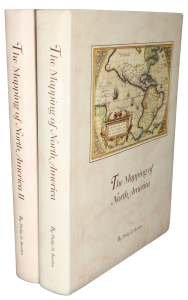Rare Maps and Prints
- World & Celestial
- North America
- West Indies, South & Central America
- British Isles
- British Isles
- English counties
- Large-scale
- Bedfordshire
- Berkshire
- Buckinghamshire
- Cambridgeshire
- Cheshire
- Cornwall
- Cumberland
- Derbyshire
- Devon
- Dorset
- Durham
- Essex
- Gloucestershire
- Hampshire
- Herefordshire
- Hertfordshire
- Huntingdonshire
- Islands
- Kent
- Lancashire
- Leicestershire
- Lincolnshire
- Middlesex
- Norfolk
- Northamptonshire
- Northumberland
- Nottinghamshire
- Oxfordshire
- Rutland
- Shropshire
- Somerset
- Staffordshire
- Suffolk
- Surrey
- Sussex
- Warwickshire
- Westmoreland
- Wiltshire
- Worcestershire
- Yorkshire
- Wales
- Scotland
- Ireland
- Western Europe
- Eastern Europe
- Middle East
- Africa
- Asia
- Australasia & Pacific
- Decorative Prints
- Title Pages
Mr. Philip D. Burden
P.O. Box 863,
Chalfont St. Giles, Bucks HP6 9HD,
UNITED KINGDOM
Tel: +44 (0) 1494 76 33 13
Email: enquiries@caburden.com
The ‘New English Atlas’ was first issued in fifteen parts, each consisting of three maps. It was priced at ‘6s. 6d. neatly coloured, or 8s. handsomely stained’. A complete set is held in the British Library (Maps. MT.6.a.1). The final part contains a note to the subscribers dated 24 February 1804. Both Charles Smith and John Cary were great rivals in the first half of the nineteenth century. Smith’s ‘New English Atlas’ was completed first. Cary’s work was also issued in parts, the first of which also appeared in 1801. However, Cary’s ‘New English Atlas’ would not be completed until 1809.
Although Smith’s county maps were drawn on earlier sources, they bear the distinction of being the first to show longitudes from the meridian of Greenwich Observatory. The first acceptance of Greenwich as the meridian appears on John Cary’s ‘New Map of England and Wales’, first published as a wall map in 1792 but more readily known by the atlas format issued in 1794. Individual maps of counties had been published using it before. However, the first county atlas to utilise it is the ‘New English Atlas’ by Smith, 1804. The maps were often revised in the early years and from the beginning were available individually.
The atlas issue states that ‘The roads to the different Counties which are connected may be traced by Alphabetical Letters placed at the extremities.’ This is a feature drawn from John Cary’s ‘New and Correct English Atlas’, 1793, and was the forerunner of the road numbering system we know of today. The engravers are identified as ‘Jones & Smith sculp.’, the latter of which is of no known relationship to Charles Smith the publisher of the atlas. The quality of the engraving is easily a match for those by Cary. This work is probably Charles Smith’s most respected.
An interesting note about the map of Surrey is that it is believed to be the earliest to depict a railway. Identified as a ‘Proposed Iron Railway’, it was incorporated on 21 May 1801 and ran from Frying Pan Creek or the River Wandle, a wharf on the River Thames, to Croydon: a little over 9 miles. Prior iron railways were all linked with canals. This was the ‘first public line that was not owned by a canal company’ (Pryor). It was the ‘first public railway to be statutorily incorporated. Traction was by horses and mules only’ (James). It was constructed because a canal was deemed not feasible due to the nearby River Wandle not having enough spare water capacity to support one. It was not a financial success and closed in 1846. Part of the route is still used today by British Rail.
There were later editions of 1808, 1818, and 1820. This was followed by an edition in 1821 in which the dates on all the maps bear ‘Corrected to 1821’ below each title, excepting the general map of Yorkshire which is dated 1822 reflecting its inclusion in Smith’s quarto sized ‘New English Atlas’ of the same year. This is an example with all the maps dissected on linen and placed in a series of attractive contemporary slipcases. The paper used is wastermarked ‘J. Whatman Turkey Mill’. Provenance: Donald Hodson collection (1933-2016), carto-bibliographer, acquired 1969. Carroll (1996) 56; Chubb (1927) 312; James (1983) p. 10; Pryor (2010); Worms & Baynton-Williams (2011).








